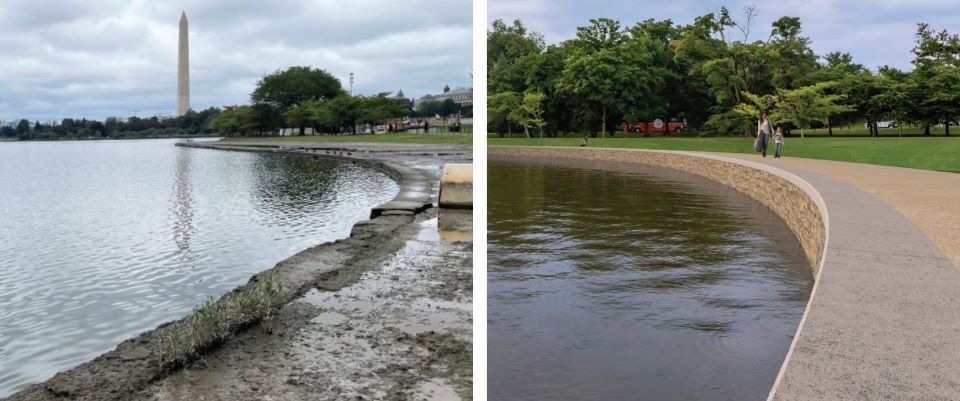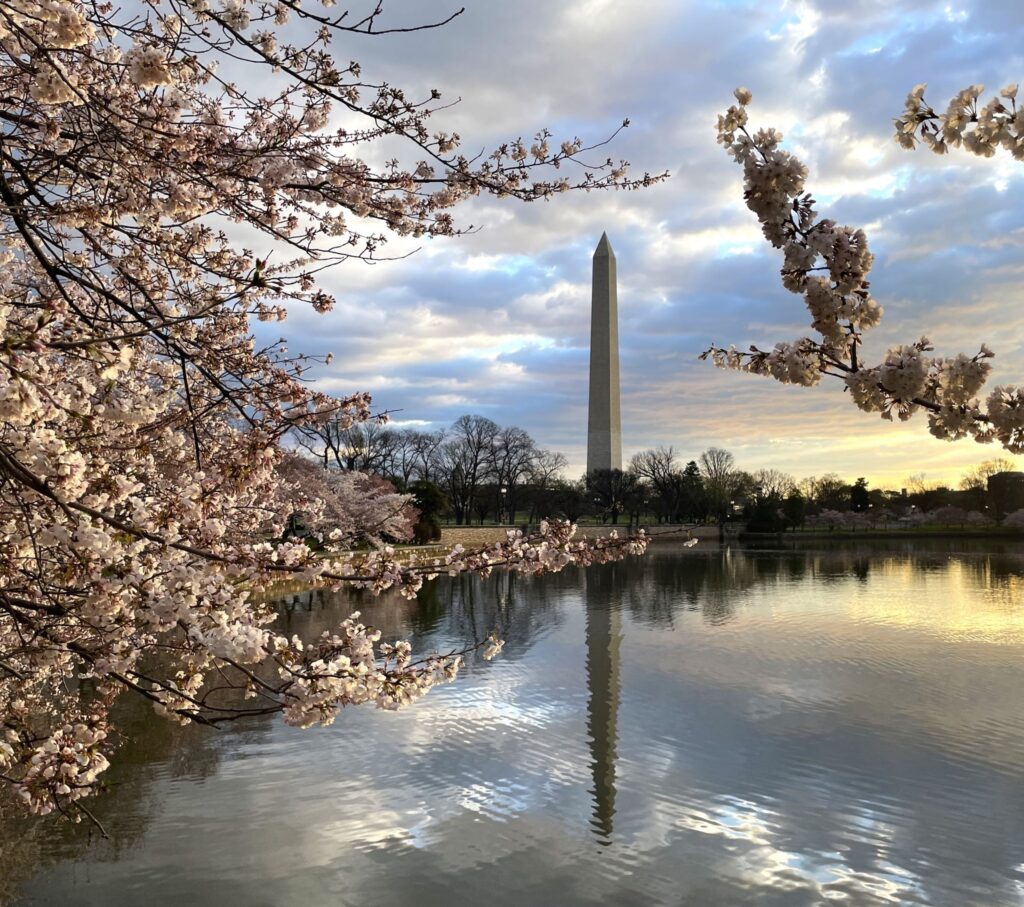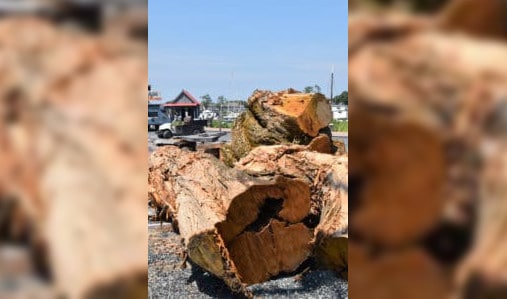Washington, D.C.’s famous cherry blossom trees are now at peak bloom, according to the National Park Service (NPS). And you may want to make a visit this week. Because of pending construction at the Tidal Basin, this year’s National Cherry Blossom Festival will be your last chance to see several dozen of the famed trees. Nearly 150 of them are slated to be cut down.
After the blooming is over and the 1.5 million Cherry Blossom Festival visitors go home, NPS will launch a three-year, $113 million project to rebuild the Tidal Basin seawalls, which have deteriorated with flooding, and fortify them against rising sea levels.

The construction will take place around the Tidal Basin and along the Potomac River through West Potomac Park. The first step is clearing a construction staging area and getting the seawall site ready.
Beginning in late May, crews will remove 300 trees including about 140 Japanese flowering cherry trees between the Jefferson Memorial and the Roosevelt Memorial. “Every effort was made to minimize the number of trees that must be removed,” NPS says.
And they add that when the project is complete, 455 new trees, including 274 Japanese cherry trees, will be planted in the area to replace those lost.
NWS says despite the disruption to the cherry trees, this project is necessary because the seawalls are no longer structurally sound, posing a threat to visitor safety, the historic area, and the cherry trees as a whole.
“Portions of the seawalls have settled as much as five feet since their initial construction from the late 1800s to the early 1900s,” NPS explains, causing water to flow over portions of the seawall twice a day during normal tidal conditions.
After the staging step and tree removal, construction will begin around the Tidal Basin and then move on to West Potomac Park. The work includes removing and rebuilding the existing stone masonry seawalls, but this time they will include a pile-supported platform foundation to prevent settling. It will allow for extending the height of the walls if sea levels rise or storm surges make it necessary to raise the walls in the future. Crews will salvage and reuse stones from the historic wall when possible. Landscaping will be regraded along the seawalls to ensure water is draining properly.
NPS says the trail around the Tidal Basin will remain open throughout the project, aside from temporary pedestrian detours in some spots. The walkways will be widened in some parts.
The restoration, which is funded by the federal government’s Great American Outdoors Act Legacy Restoration Fund, is expected to be complete in 2027.
The seawall repairs are part of an even larger plan to make nearly $500 million in infrastructure improvements to the National Mall ahead of the 250th anniversary of America’s independence in 2026.




